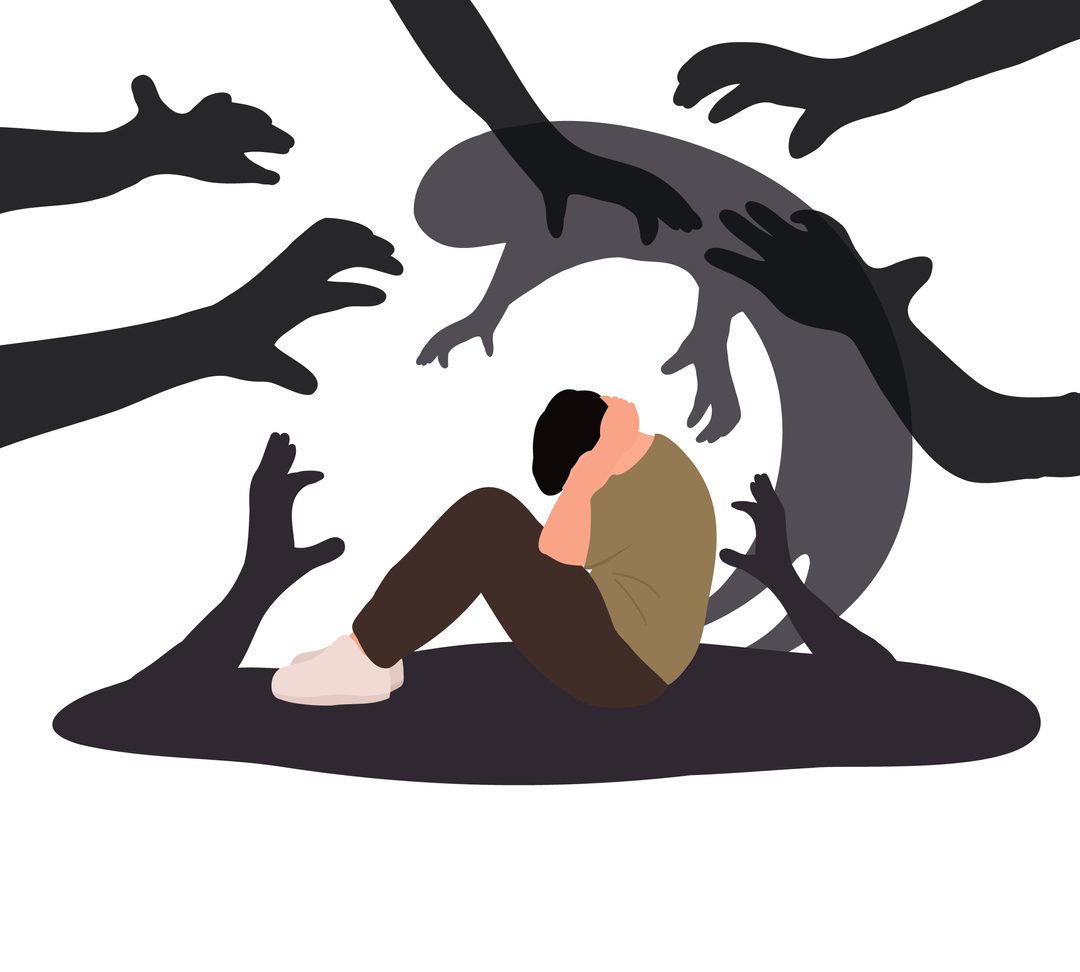Most of us would be familiar with the more traditional type of post-traumatic stress disorder (PTSD), that arises from a single distressing event such as a car accident or natural disaster. You might not be aware that there is also a ‘complex’ version of the condition known as CPTSD. This results from trauma unfolding over many months or years where there is little opportunity to escape, such as an abusive relationship or living in a war zone.
“People are thought to be more likely to develop complex PTSD if they experience trauma from an early age, if the trauma is repetitive or chronic in nature, if they experience multiple traumas, and if they were harmed by a caregiver or someone close to them,” says clinical psychologist Dr Lillian Nejad.
In New Zealand, around two-thirds of the population will experience one or more traumatic events in their lives that could lead to PTSD. In the wake of the pandemic, the rate of PTSD diagnosed worldwide is expected to increase, especially in healthcare workers and those who have been confined for extended periods of time.
The symptoms
The symptoms of the complex version of the condition are similar to the traditional version, but include additional repercussions around maintaining relationships, keeping emotions steady, and patients seeing themselves in a negative light. There is also a significant overlap with anxiety and depression.
“Individuals with CPTSD have the same symptoms as people with PTSD such as re-experiencing memories of the event, avoidance behaviours, problems with their thoughts and emotions and hyperarousal, but they also have symptoms related to ‘self-organisation’,” says Nejad.
“These include difficulties regulating emotions, problems relating to others, and a negative self-concept characterised by feelings of guilt and worthlessness.”
Trauma can be present in both children and adults, although it can look more subtle in children. With time, a child’s behaviours may crystallise into being identifiable as CPTSD, says psychiatry resident Dr Kieran Kennedy.
“A child with symptoms of trauma might, for example, present as more withdrawn, classically fearful or regressed in behaviours, such as bedwetting or nightmares,” says Kennedy. “Children who have suffered or are suffering from traumatic events or environments can present with a range of symptoms and struggles, and at present it appears that with time these might develop into the more clear-cut features of CPTSD as it’s currently recognised.”
An evolving diagnosis
Complex post-traumatic stress disorder is an emerging diagnosis that is still the subject of debate on several fronts. It is recognised by the World Health Organisation and in the International Classification of Diseases, but has not yet been included in the main psychiatric manual used across Australia and New Zealand, the Diagnostic and Statistic Manual of Mental Disorders (DSM).
As our understanding of the effects of trauma continues to grow, the models we use to describe them are being refined. We’ve come to recognise that CPTSD is a useful term to describe a distinct set of challenges to patients and mental health professionals, says forensic psychologist Leesa Morris.
“Its use is becoming more popular amongst therapists to acknowledge that the client’s presentation is not necessarily going to be standard, and intervention needs to be adjusted,” she says. “As PTSD has evolved over time from ‘shell shock’ in World War I veterans, we have come to note the evolving events that can be experienced as traumatic. Particularly in forms of childhood abuse, there are multiple events that weren’t previously recognised as being traumatic that are now being included in the diagnostic criteria.”
Some mental health professionals question whether there is any practical difference between CPTSD, and the ‘standard’ version, along with borderline personality disorder, or whether they simply exist on a sliding scale of severity.
“The distinction between PTSD, complex PTSD and also the diagnosis of borderline personality disorder has been an issue of contention for many years, due to overlap of the symptoms among these disorders,” says Kennedy. “Many experts in trauma consider the difference between PTSD and CPTSD as a difference in severity rather than a difference in symptoms. Others argue that people with CPTSD display extra symptoms. Studies have evidence to support that PTSD, CPTSD and borderline personality disorder are separate and distinct from each other, but still, others contend that a continuum model makes more sense.”
Complex post-traumatic stress disorder also bears a striking resemblance to bipolar disorder.
“Bipolar affective disorder is a mood disorder characterised by heightened emotional states and depressive states,” says Nejad. “Because people with PTSD experience hyperarousal that manifests as being irritable, reactive and hypervigilant, these symptoms can often be mistaken as being in a manic state.” A further complication is that individuals can and often do have more than one of these conditions at the same time. “A significant proportion of people with borderline personality disorder are also diagnosed with PTSD and vice versa,” says Kennedy.
The role of triggers
The circumstances that can set off unpleasant memories in a person who has CPTSD are personal to an individual’s particular history of trauma. Their response also varies according to factors such as the specific symptoms they experience, current environment and the support systems available to them. Risky situations, whether physical or emotional, can understandably trigger them into feeling unsafe, but the triggers might be something that would seem completely harmless to others.
“Triggers can include people, your own thoughts and emotions, objects, sensations or places that remind you of the trauma, and sometimes scenes that depict a similar trauma such as in a TV show or movie,” says Nejad. “Anniversaries of the trauma can also often trigger PTSD or CPTSD symptoms.”
These triggers take them back to how they felt when they were traumatised in the first place and so are avoided as much as possible.
“There are expected emotional and mood changes and they will be in response to ‘triggers’ or reminders of the events which ‘shift’ the person back to the time of the events,” says Morris. “The individual re-experiences all or part of the traumatic events and avoids any reminders of it.” This response can sometimes blindside the person, with a resultant emotional fall-out that can significantly impair their daily life. So, what can be done to alleviate these feelings in someone who is experiencing CPTSD?
“Much of the current research and data appear to show that specific trauma-based treatments used for more traditional PTSD can be and are helpful for those who have CPTSD as well,” says Kennedy.
Road to healing
These treatments include trauma-focused therapy, cognitive behavioural therapy, and eye movement desensitisation and reprocessing (EMDR). The latter therapy involves the patient focusing on a past distressing experience while performing guided eye movements to help desensitise them to these memories by changing the way they are stored in the brain. Antidepressants are also believed to benefit people with the condition, although the medical profession is still awaiting definitive evidence as to how these medications address CPTSD symptoms.
While the condition currently can’t be cured as such, the good news is that patients can go for long stretches of relief from the symptoms.
“CPTSD isn’t ‘cured’ so much as it goes into remission,” says Morris. “Someone with this diagnosis is likely to experience stressful events more intensely than others throughout their life. However, with strategies in place and routine activities like exercise, healthy lifestyle and self-care, clients can go decades without symptoms.”
Taking time for you
Self-care is important for us all, but it is especially vital for people who have experienced a tough time.
This might look like:
• Concentrating on the health basics of getting enough sleep, eating wholesome food, doing regular exercise, and getting enough quiet time to recharge.
• Opening up to trusted friends and family so that they can support you through the rough times.
• Expressing yourself through drawing or writing may help you release your feelings.
• Spending more time on activities that make you feel calm such as going for a walk, listening to soothing music, reading and having a warm bath.
• Reading about PTSD may be helpful to assist in understanding your reactions and feelings. It’s perfectly natural to feel shocked and out-of-sorts after experiencing a distressing event or series of events. It is not at all a sign of weakness and it’s a good idea to seek help if you feel you need it. If you have severe, disruptive thoughts and feelings for more than a month or if you feel like you’re having trouble wrestling your life back under control, it’s time to speak with your doctor. Getting on top of these feelings early can prevent the symptoms from progressing into PTSD.
• Others may feel better by simply letting their memories fade.
Where to get help
For support with PTSD or Complex PTSD, visit: healthnavigator.org.nz/health-a-z/p/post-traumatic-stress-disorder-ptsd/







